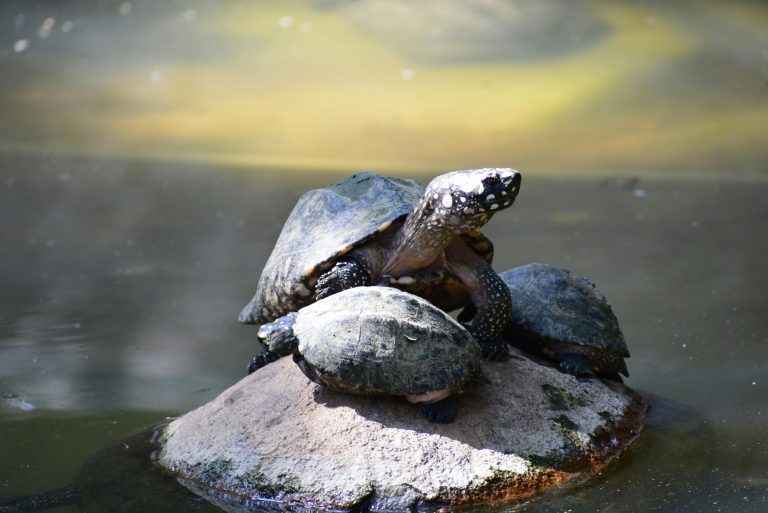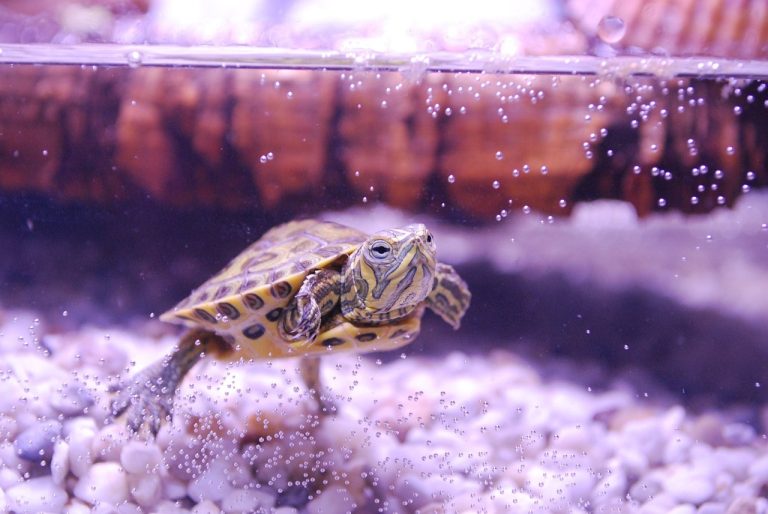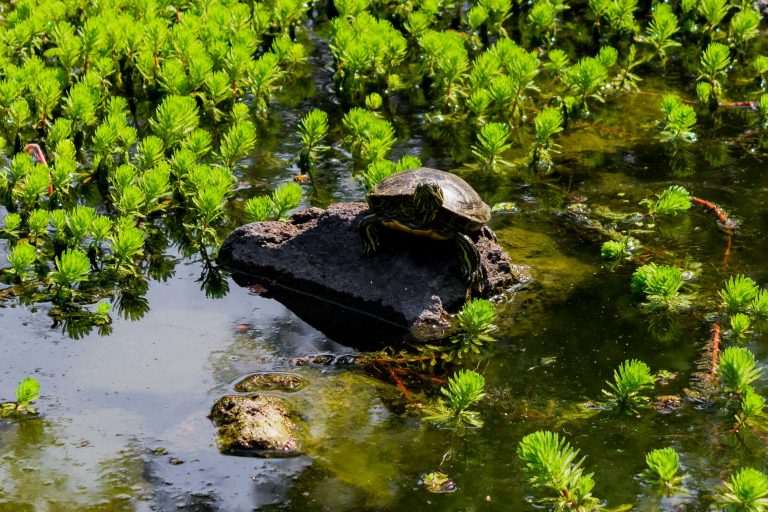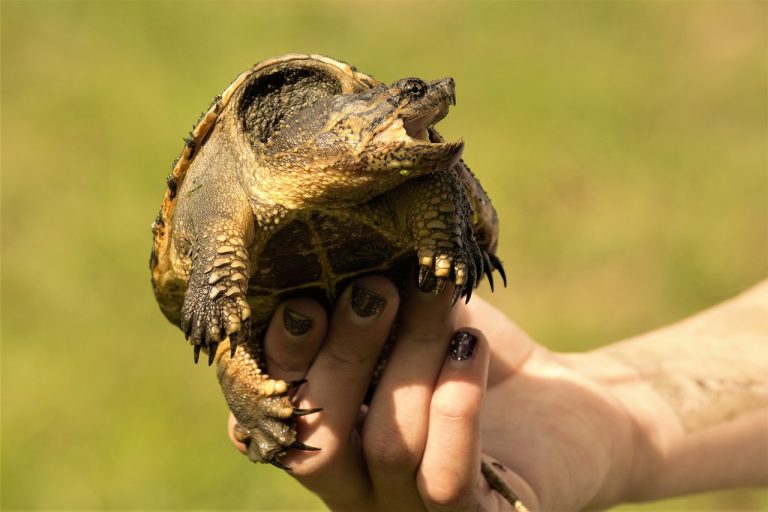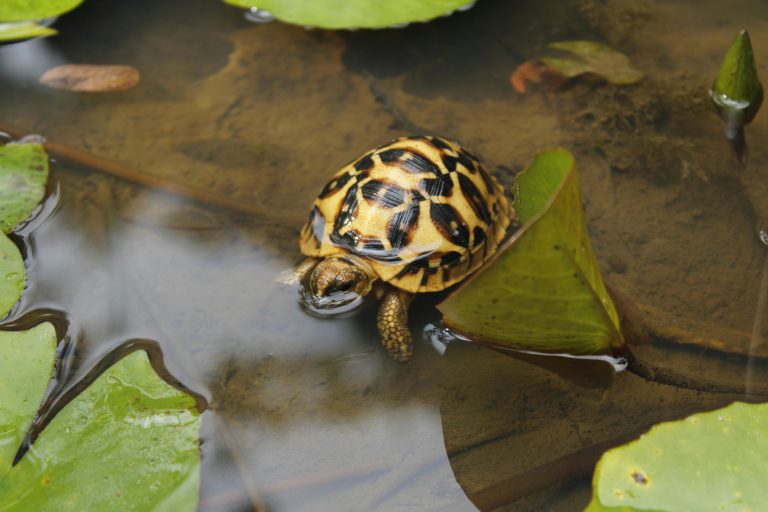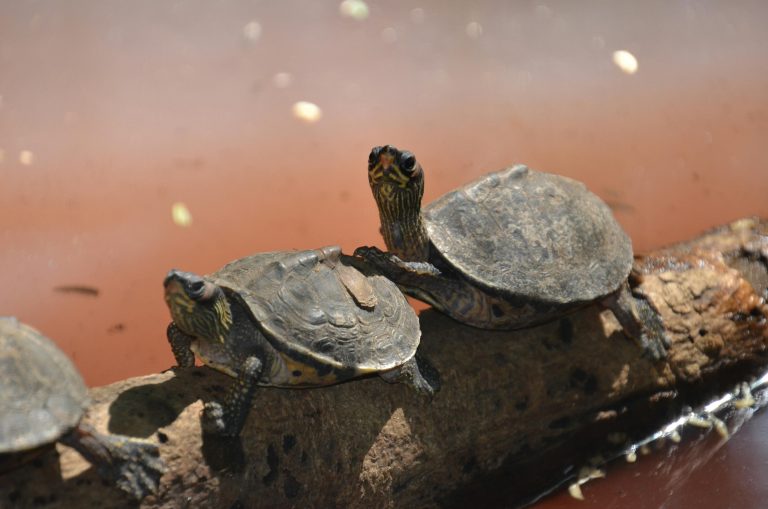What Do Baby Turtles Eat In The Wild?
When it comes to baby turtles, whether they’re paddling in freshwater streams or navigating salty coastal waters, their appetites lean towards the carnivorous side during their early years. Providing for their dietary needs is quite the challenge, especially when they’re out in the wild, away from human supervision.
In the natural world, not every baby turtle makes it past infancy; some struggle to find sustenance, while others fall prey to predators. However, those equipped with strong survival instincts manage to thrive on a diverse menu of aquatic insects, larvae, algae, tadpoles, hyacinths, shrimp hatchlings, mollusks, and more.
But the culinary adventures of baby turtles don’t stop there. In the wild, they may also feast on animal carcasses and occasionally nibble on fresh vegetables, showcasing their adaptable palates and resourcefulness in sourcing food.
In the following article, I’ll delve deeper into the fascinating feeding habits of these resilient little creatures, shedding light on their dietary preferences and survival strategies in their natural habitats.

Here are some key takeaways about baby turtles and their dietary habits:
- Baby turtles primarily subsist on a diet of small fishes, aquatic plants, crustaceans, and other small creatures.
- Freshwater turtles typically exhibit omnivorous or carnivorous tendencies, with their diets consisting of a mix of animal and plant matter.
- Tadpoles and similar hatchlings are among the favorite snacks for baby turtles, showcasing their preference for small aquatic prey.
- Baby turtles have a higher carnivorous inclination compared to adult turtles, requiring more protein to support muscle growth and overall body development.
- Predators such as eagles, crocodiles, and other carnivorous creatures pose significant threats to baby turtles, making survival a challenging endeavor in the wild.
What Do Baby Turtles Eat In The Wild?
Once baby turtles hatch, their instinct drives them straight toward the nearest water source. It’s their first instinctual journey towards sustenance.
In their aquatic habitats, baby turtles rely heavily on a diet comprising aquatic animals, insects, and various plants to satisfy their hunger. Here’s a glimpse into the typical foods enjoyed by wild baby turtles:
Earthworms:
Found abundantly in fertile lands near rivers and ponds, earthworms serve as a rich protein source for baby turtles. These tiny wrigglers, along with mealworms and waxworms, are irresistible treats for our little shelled friends.
Grasshoppers:
In the vicinity, grasshoppers become potential meals for baby turtles. With their lightweight shells and agile movements, baby turtles are surprisingly swift both on land and in water, making them adept hunters of these hopping insects.
Crickets:
Similar to grasshoppers, crickets are a favorite protein source for growing baby turtles. However, they can only tackle smaller or medium-sized crickets with their tiny jaws.
Beetles:
Baby turtles, just like their adult counterparts, are opportunistic feeders. They won’t pass up the chance to feast on beetles, cockroaches, and other arthropods when hunger strikes.
Larvae:
Depending on their hatching location, baby turtles munch on various insect larvae. Whether it’s mosquito larvae in stagnant water or tadpoles in freshwater ponds, these wriggling critters make for a tasty meal.
Spiders:
Tiny spiders are also on the menu for baby turtles, alongside crickets and grasshoppers. Many omnivorous turtle species, such as box turtles, relish the opportunity to dine on these eight-legged delicacies.
Small Crustaceans:
Baby turtles have a knack for devouring small crustaceans and mollusks found in their watery homes. From shrimp hatchlings to miniature snails and tiny crayfish, these soft-shelled treats are quickly swallowed and digested.
Algae/Fungi:
Near water bodies, baby turtles eagerly snack on algae and fungi, including wild mushrooms, adding a touch of variety to their diet.
Small Fish:
Water bugs, fish eggs, and even small fish become potential prey for baby turtles as they explore their aquatic environment. Snapping turtles, known for their boldness, may even go after medium-sized fish.
Centipedes:
For baby turtles residing near vegetation, small creatures like centipedes, caterpillars, and millipedes provide additional sustenance.
Plants & Greens:
Baby turtles incorporate aquatic vegetation, fresh vegetables, and leafy greens into their diet. Duckweeds, water hyacinths, and ferns/lettuce are among their preferred greens.
Meat:
In the presence of big fish or animal carcasses, baby turtles exhibit their scavenging tendencies by feasting on leftover meat, adding a carnivorous twist to their diet.
Understanding the diverse palate of wild baby turtles sheds light on their remarkable adaptability and resilience as they navigate their natural habitats in search of nourishment.
Can Baby Turtles Hunt For Live Food?
While not evident from the start, many baby turtles gradually develop a natural hunting instinct as they strive to thrive in the wild.
Species like snapping turtles, red-eared sliders, and painted turtles are among those that actively hunt for live prey from a young age.
These turtles are often referred to as predatory species, as they assert dominance within their ecosystems’ food chains. In habitats where they reside, they have the ability to monopolize food resources. For instance, if red-eared sliders establish themselves in an ecosystem, they may outcompete local turtle species for resources, potentially leading to the extinction of these native species.
Do Baby Turtles Eat Each Other?
Unfortunately, in dire circumstances, baby turtles may resort to cannibalism as a means of survival. While not a common occurrence, several factors can contribute to this behavior:
Overpopulation:
In densely populated ecosystems, competition for resources can intensify. Baby turtles may become aggressive towards their siblings, leading to cannibalistic behaviors as they vie for limited food and space.
Resource Scarcity:
When essential food sources are scarce within the ecosystem, baby turtles may experience heightened stress levels. In desperation to meet their dietary needs, they may turn to cannibalism as a last resort.
Hunting Instincts:
Certain turtle species possess naturally aggressive hunting instincts. For example, snapping turtles are known for their ferocity compared to other turtle species. Their innate predatory behavior may drive them to engage in cannibalistic acts when food sources are limited.
Therefore, baby snapping turtles may resort to killing and consuming their cousins from different species, or even their weaker siblings, in a ruthless display of survival of the fittest.

No-No’s Of Feeding Baby Turtles In The Park
While it’s common for people to enjoy nurturing wildlife by feeding bread to ducks or birdseed to birds, it’s essential to consider the impact on the ecosystem, especially when it comes to baby turtles. In the wild, it’s crucial for baby turtles to learn to hunt independently to increase their chances of survival.
When it comes to providing treats for baby turtles, it’s best to avoid certain items that can disrupt their natural diet and potentially harm them:
- Raw Meat: Baby turtles may struggle to digest raw meat, and it can also harbor parasites, leading to digestive issues and health problems.
- Bread: While offering bread may seem like a kind gesture, it provides little to no nutritional value for baby turtles. Additionally, milk bread or sweetened bread can cause stomach problems for turtles, as they cannot digest dairy products like milk and cheese.
- Plant Leaves: Certain plant leaves, such as azalea and rhododendron, are toxic to both baby and adult turtles. Feeding random leaves to baby turtles in the local park can pose serious health risks, so it’s best to refrain from doing so.
By being mindful of the food we offer to baby turtles, we can help preserve their natural instincts and ensure their well-being in their native habitats.
Conclusion
In the wild, baby turtles primarily rely on a diet consisting of insects and small aquatic plants to sustain themselves. As they grow, most turtles develop natural instincts to hunt for food, honing their skills to capture prey and forage for vegetation.
However, it’s worth noting that not all baby turtles fend for themselves from the start. Some are fortunate enough to grow up under the care of their mother turtles, who provide guidance and protection during their early stages of life. Under the watchful eye of their mothers, these baby turtles learn essential survival skills and behaviors, ensuring their chances of thriving in their natural habitats.
